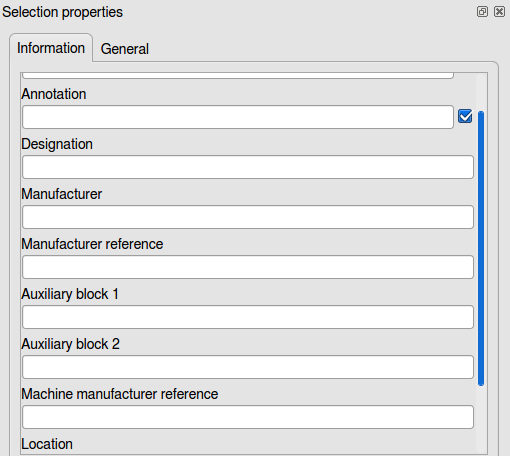@ Opus
un fichier qet n'a pas de prologue : <?xml version = "1.0" encoding="UTF-8" ?>
je ne connais pas les raisons pour lesquelles cette information n'existe pas.
Je pense que cette décision a du être prise au tout début du développement de QET.
On pourrait aussi séparer dans un autre fichier XML la partie information des éléments.
Tu parles des informations qu'on rentre à la main dans le dock "propriétés des éléments" ?
Ou de la définition des éléments embarqués marquée par la balise <collection> dans le fichier *.qet ?
Personnellement, je trouve très bien que tout soit intégré dans un seul et même fichier car cela rend les projets facilement transportables d'un PC à l'autre sans aucune perte de donnée (ce qui n'est pas forcément le cas avec les alternatives commerciales de QET où il manque parfois la moitié des données quand le projet arrive chez le client ![]()
![]() ...).
...).
Et peu importe que tu sois sous Windows, Linux ou Mac, ca marche sur tous les systèmes ![]()
De plus, un fichier *.qet se compresse très bien, avec souvent des ratios supérieurs à 10, ce qui rend les projets légers et donc facile à envoyer par mail (ce qui n'est pas forcément le cas avec les alternatives commerciales de QET où l'envoi par cloud est quasi indispensable ![]() ...)
...)
La seule chose qui peut rendre un fichier *.qet énorme et indigeste, c'est l'intégration d'un grand nombre d'images (jpg, png...) car elles sont codées en base 64 dans le xml, ce qui n'est pas optimal.
![]() après réflexion, je vois pas trop où tu veux en venir avec ta proposition de séparer les info éléments dans un autre fichier ?!?
après réflexion, je vois pas trop où tu veux en venir avec ta proposition de séparer les info éléments dans un autre fichier ?!?

